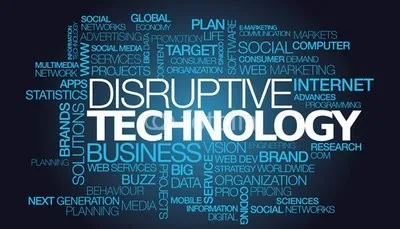Technology improves lives, but it also disrupts them. For example, some experts anticipate that robots and sensors will replace human workers but new jobs will be created to manage digital data.
The global reach of many emerging technologies highlights the need for broad, multilateral engagement to address governance challenges and risks. This includes expanding existing platforms for multilateral engagement to address ICT, AI, biotechnology, and space technology.
Robotics
Robotics technology is rapidly advancing. It is highly research-intensive and collaborative and has a broad scope. It encompasses materials science, motive power, control systems, sensing and computing.
Innovation in robotics is driven by university spin-off companies and by large established manufacturing companies, such as ABB (Switzerland), Kawasaki Heavy Industries, Yaskawa and Fanuc (Japan) and KUKA (Germany). Companies that succeed will be highly customer centric and provide the most-targeted and customizable features at the lowest cost.
Improvements in robotics technology will increase productivity and bring more manufacturing production work back to developed countries, rather than offshore it to lower-wage countries. However, higher labor-market churn rates will result in increased unemployment unless dislocated workers are quickly re-employed.
Artificial Intelligence
Few industries can be considered immune to the impact of modern AI. It has already revolutionized several areas, including finance, national security, healthcare, transportation and criminal justice.
Artificial intelligence is a broad term for computer systems that can learn and perform tasks more like humans, but limited by strict parameters. Weak AI consists of systems designed to carry out one specific task, from playing video games to providing answers to questions through personal assistants like Alexa and Siri.
NIST is leading research and development of technical AI standards to ensure that such systems are trustworthy and responsible, secure and resilient, transparent and explainable, privacy-enhanced and fair with harmful bias managed.
Biotechnology
Biotechnology involves the manipulation of living organisms, including plants and animals. Scientists have used this technology to modify existing species and create new ones, such as crops that are resistant to drought and cloning the first mammal, Dolly (an exact genetic copy of a Finn Dorset ewe).
Biomanufacturing uses living organisms or parts of them to make pharmaceutical products, nutritional compounds, biofuels and environmentally friendly chemicals and materials. Startups are advancing cell culture, fermentation and recombinant production technologies to make biomanufacturing cheap and scalable.
The cost of DNA sequencing is falling rapidly, allowing physicians to identify patients’ pediatric disorders and provide personalized treatment. This enables precision medicine, which has the potential to revolutionize healthcare.
Space Technology
The technology that came out of the Cold War’s space race still influences us on a daily basis. Whether it’s inventory monitoring at distant warehouse locations or authorizing credit card transactions in real time, satellite technology plays a critical role in the day-to-day operations of large corporations.
Falling launch costs and rapidly improving technology are making it increasingly feasible for companies to operate in outer space. This is opening up new possibilities for space-to-Earth activities like optimized broadband infrastructure, national security satellites, and even launching solar factories in orbit to harness the sun’s energy.
Space technology is also advancing the way we address global sustainability issues. This is particularly true of the 17 Sustainable Development Goals laid out by the United Nations.
Nanotechnology
Nanotechnology, or nanoscience, involves the manipulation of matter on an atomic and molecular scale. This can lead to a wide range of technological advances, including new sensors that can detect and identify dangerous chemicals in the air; photoelectric materials that will allow for cost-efficient solar energy systems; and biomedical devices that can treat disease more effectively.
Nanotechnology is already making its way into everyday products and technologies. Sunscreens now contain nanoparticles that provide better coverage and a more natural feel. Graphene makes for faster, lighter microchips, and carbon nanotubes can reduce the weight of wind turbine blades while increasing their strength. Even diesel fuel can benefit from nanotechnology; cerium-oxide nanoparticles help it burn more cleanly.
Machine Learning
Machine learning is the underlying technology that allows AI systems to automate processes and solve data-based business problems autonomously. It’s the engine behind online chatbots like those from Amazon and Netflix, the speech recognition in your smartphone, medical diagnostics based on images, and more.
The rapid growth of the field is creating intense competition among companies that offer platform services for collecting and analyzing data, model building, training, and application deployment. However, companies should be careful to avoid looking at machine learning as a solution in search of a problem.

